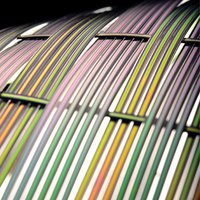Nanotechnology & materials
Baile Zhang
A new type of invisibility cloak made from a common material can work with larger objects <br>
Illustration by John Ritter

Latin America
Nadim Morhell
A new diagnostic tool to measure neonatal blood viscosity

Global
Prashant Jain
Tuning nanocrystals to make tinier, more efficient switches for optical computing and solar panels

Global
Zheng Wang
Slowing light to help chips cope with optical data

Global
Bozhi Tian
Artificial tissue that can monitor and improve health down to the level of individual cells
